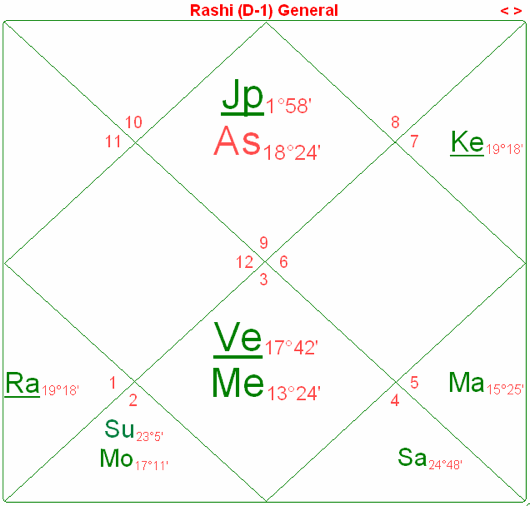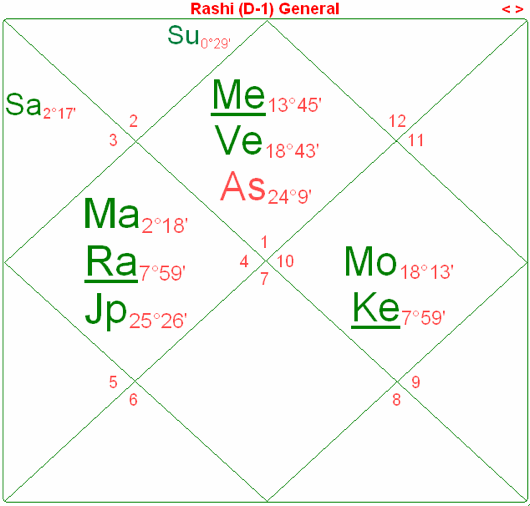Spring | Summer | Fall | Winter | |
2025 | Volume 67 |
| Volume 65 | Volume 66 |
Volume 8, March 21, 2010
“An optimist is the human personification of spring.”
Sanskrit: the Language of Revelation
Have you ever heard anyone chanting in Sanskrit? Even though you might not know the meaning of the chant, something very sweet settles in your heart and simultaneously energy pulses through your body. Why should Sanskrit have this effect?
There is an old saying "that which is closest to the truth lasts the longest". The oral tradition of India has preserved the recitation of the Veda (deep knowledge). It has been the source of inspiration and wisdom for countless generations. Its antiquity cannot be reliable traced. It reaches back in time perhaps some 5,000 years cherished by civilizations that did not record in pen and ink.
Contrast that with our experience of English that has vastly changed in just a few hundred years. To verify the truth of that, just visit a restless high school class struggling with Hamlet written in the Elizabethan era. It is almost like another language.
How then can these recitations survive the wide chasm of time? It is because the recitations are in the sacred tongue of Sanskrit.
That language is sacred is not a concept limited to India. Many of the ancient civilizations considered it to be so including the ones that give rise to the Judeo Christian Bible where a famous verse declares "In the beginning was the Word and the Word was with God and the Word was God".
Veda itself echoes this with a beautiful verse of its own which also expresses the relationship between language and the divine: "In the beginning was the Supreme with whom was the Word and the Word was the Supreme"
Indeed, it is said in the Vedic tradition that Brahma, the Creator, introduced Sanskrit to the sages and it became known as the language of the Gods. It is the vehicle by which human sounds are sustained by the voice of the Creator.
So perfect is the language of Sanskrit that the sound vibration of a thing named and the object itself is one - a concept known as namarupa. The seed of all language is said to be "OM", the "sound" of Brahman that is Brahman. From this correspondence comes that revelation that the unity of name and form occurs on all levels of reality.
It is this revelation that inspires us to learn to perfect our pronunciation of the precious mantras, shlokas and philosophical terms. That perfect pronunciation creates the very outcome we seek by our practice. It gets structured even on the level of our physiology and DNA.
This is the gift of Saraswati, goddess of the power of the Word.
The Path Into Shastra
Part V
The Value of the "Tall Tale"
The fifth golden key to unlocking the treasure of shastra is called Arthavada which can be most succinctly defined as hyperbolic language. Although this is a potent tool in all traditions, it is one of the devices that causes the most angst and disconnect for Westerners who are trying to access the knowledge contained in root texts of the Vedic tradition.
Not only do Jyotisha texts contain many references to what seems like completely archaic images, traditions, value systems and deities, but these references use tremendously exaggerated praise or dire predictions of disaster. Here are some examples:
"Should the Moon be in her deep exaltation and be aspected by Venus, evils are countered just as phlegm and bile are controlled by induced vomiting. If the Moon be in divisions of benefic planets and aspected by benefics, she will not prove evil though she may be waning, just as nutmeg bark treats dysentery."
"One born with a Chandradhi Yoga will become a king possessing a kingdom boundaried by seas whose band of intoxicated elephants will eke out ichor which the black forest bees will drink mistaking it for honey. Such a native will be immune to senescence and sickness, be bereft of fear from enemies, be valorous, fortunate and happy.
"If Saturn occupies Virgo at birth, the subject will resemble a eunuch, be very crafty, will depend on others for good, be addicted to prostitutes, will have few friends, be unacquainted with the arts, be desirous of indulging in ugly acts, will possess sons and wealth, be indolent, helpful to others, will be intent upon spoiling virgins and be cautious in his actions."
Why did the seers of this great tradition use this device? It is because hyperbole is hugely effective in making something memorable. If your four year old is about to put a finger in an electric socket, mom or dad will NOT calmly say, "please don't put your finger in the socket - you may get an electric shock". Most likely the child will be yanked away and told "Don't you touch! You'll fry!"
As has been mentioned in previous articles in this series, the Sanskrit script does not in itself have ways of creating emphasis through the use of such devices as italics, underlining, capitalization etc. For the knowledge to be effectively passed on to future generations, it must be memorable. The vivid imagery created by hyperbolic language leaves no doubt as to whether a particular combination is efficacious or damaging.
The Western reader unschooled in these principles of exegesis might take the statements literally. Sometimes, a person with a particular combination does exhibit some of the results as stated but the more correct understanding of the principle of Arthavada is that the AMPLITUDE of the hyperbole is directly related to the how valuable (or disastrous) a particular combination may be.
For example, in Brihat Parashara Hora Shastra, it is said that a benefic in the ascendant gives Shubha yoga (benefic yoga). The person born with Shubha Yoga is eloquent, charming, virtuous and well mannered. However, in an earlier chapter, the same text states that if "a single but strong Jupiter is in the lagna, it has the ability to destroy all evils just as a single reverential obeisance to Lord Shiva can destroy all sins."
Clearly one can pick up the difference in the hyperbole between these two combinations and can therefore learn which has the higher value and prioritize one's readings and interpretation accordingly.
In the vast sea of possibilities that exist in all charts, having a rudder to establish priority in one of the most important skills a Jyotisha can develop. This principle of Arthavada is pure gold in this regard.
Home Sweet Home:
How to Look for Real Estate in a Chart
One of the challenges a jyotishi faces is sorting out which of the many themes inherent in each bhava of the horoscope will come forward for a particular person at a particular time. Bhava is the sankrit term for one of the twelve divisions of the sky created by the diurnal or daily motion of the rotation of the earth on its axis.
The Western astrological equivalent is "house" but bhava in no way translates as house. It means rather a state or condition, being, becoming or manner. It derives from the Sanskrit root bhu which is the verb "to be".
Sage Parashara tells us to examine the fourth house and its lord for conveyances, ancestors and current relatives, mother, happiness, treasure, lands and houses. These kinds of significations are repeated across many shastras. According to the second principle of exegesis known as abhyasa or repetition (see previous newsletter) this gives us the assurance that this is not an idiosyncratic reference and we may rely on this bhava as the principle seat for assessing fixed property.
As with all methods of analysis, the trick is to see an indication repeated in several different ways before we can count on it as a major indicator of someone's destiny pattern. Therefore along with the fourth bhava and its lord, shastra directs us to look at two grahas in particular, Mars and Saturn, who are the karakas or signifiers for property.
The "official" name for these grahas is bhumi karakas where again the root bhu is the source of the derivation of the word but this time it signifies a more metaphoric idea of "being" as the ground state of what supports everything on earth - the land. Under all is the land. Upon its wise utilization and widely allocated ownership depend the survival and growth of free institutions and of our civilization". This quote is the basis of the National Association of Realtors charter and is quite a beautiful statement for the importance of land and property in all cultures at all times.
In addition to the main chart, there is a particular divisional chart that can be assessed for matters of land and property. Though shastras gives very little specific information on the utility of each of the divisional charts, the tradition uses the fourth divisional chart known as the Turyamsha or Chaturtamsha for assessing large fixed assets such as property.
Putting together some of the pieces from above, we may surmise that certain chart configurations may be "giveaways" in terms of a predilection towards property. For example, a Capricorn ascendant (owned by Saturn, a bhumi karaka) could have an exalted Mars in the ascendant which would aspect into its own fourth bhava of Aries or Mars could simply be in its own fourth bhava. This would incline towards property with both bhumi karakas active though Saturn is more of a passive indicator as the lord of the chart and Mars the active indicator.
Either a Gemini or Sagittarius chart with the fourth lord in the ascendant will also give a powerful boost to the theme of property. In the case of the Gemini chart, Mercury will own the fourth bhava as it rules the sign of Virgo and if it is in its on Gemini first house, it will be doubly strong as it is swa rashi or own sign as well as having directional strength.
The same is true of Jupiter for the Sagittarius ascendant. The fourth bhava will be a Pisces fourth bhava, Jupiter's other sign and it too will be in its own sign in the lagna as lord of the fourth with directional strength and therefore doubly strong. You can also have it the other way around. Mercury as lord of a Gemini lagna could be in Virgo in its own fourth bhava and once again, a very powerful indicator of the linkage between self and property. The parallel structure could occur for the Sagittarius ascendant.
When the lord of someone's fourth house is in a dussthana and afflicted, if there is confluence from other indications, the person may suffer on account of their property. For example in a Scorpio lagna, a debilitated Saturn as the lord of the fourth bhava in the sixth can indicate expenses from real estate that are anxiety provoking (Saturn). It could also indicate debt taken on to resolve issues around the property that might be caused by basement problems (Saturn) The combinations are endless which is one of the reasons Jyotisha is endlessly fascinating and not subject to statistical analysis.
Let's look at a couple of examples to illustrate these principles further.
Chart 1

This is the chart of a business executive named Al Checchi who joined the Marriot Hotel group at the height of the real estate recession of the late 1970's and engineered seven years of huge corporate growth. He also was a principal in Northwest Airlines through acquisition of its parent company.
Although we did not discuss it in this article, conveyances such as cars, boats, airplanes are also a fourth bhava matter. In this chart note the spectacular Jupiter with triple strength in the ascendant (own house, directional strength and retrogression) fully stabilized by a powerful Venus (retrograde) and Mercury in its own rashi. Wow! What an amazing 1/7 axis!
His real estate ventures got underway in his Jupiter dasha which ran at the prime of life from about 30 to 46 years old. Jupiter is the lord of the 4th bhava of real estate totally empowered and dominant in the life of this person and poised to give money through several of the gorgeous raja and dhana yogas across the 1/7 axis.
Chart 2

At first glance, one might think there would be a problem with fourth house matters as Mars is debilitated in the fourth house and in the Rahu Ketu axis. However, in Jyotisha, it is an established principle that analysis of yogas indicates how far above or below the baseline a person is operating and then the principles of bhava analysis tell us more of the details of that experience once the chart is contextualized.
In this chart, the exalted Jupiter keys a number of major yogas that indicate wealth and preeminence with respect to land.One of those is the yoga involving the bhumi karaka Mars as the lord of the first house with the lord of the ninth of good fortune. Since Jupiter is so powerful as the 9th lord, this is a fully accountable yoga especially if Jupiter is activated by its dasha running.
Mars also participates in Chandra Mangala yoga with Moon as the fourth lord and therefore also representing real estate. The Moon looks back to its own bhava and stabilized by that same powerful Jupiter with which is also forms two more powerful yogas.
This is the chart of George Lucas. Obviously he got his money from other sources as well but it is perhaps not a well known fact that he owns huge acreage in Marin County which is worth untold millions at this point in time. The Star Wars venture happened in his Rahu and Jupiter dashas. Rahu being joined with Jupiter and "party" to all those yogas will give the results of them all. Skywalker Ranch was the headquarters for the filming, animation etc. - the heart of the Lucas enterprise and remains a disproportionate amount of the Lucas portfolio of wealth.
The Media Corner
The Sidewalk Astronomer
I highly recommend this charming documentary focusing on the dedication of John Dobson, a former Vedanta monk, who is considered to be the most effective champion of amateur astronomy in the last fifty years.
One of his duties at the monastery was to reconcile modern astronomy with the teachings of Vedanta. To that end, he built telescopes and used them to fascinate the onlookers that would gather around him. HIs Dobsonian telescope, appropriately named for him, is a very large, effective and yet affordable telescope.
Ultimately, his love of astronomy impelled him to leave the order and pursue his fascination with both observing the cosmos and theorizing about its origins.
In 1967, he cofounded the San Francisco Sidewalk Astronomers which popularizes astronomy by parking their telescopes on the streets of the city and inspiring lay people to look at the heavens and be inspired to learn more about it.
The documentary film was released in 2005 by Jacobs Entertainment Inc and has a running time of 78 minutes.












